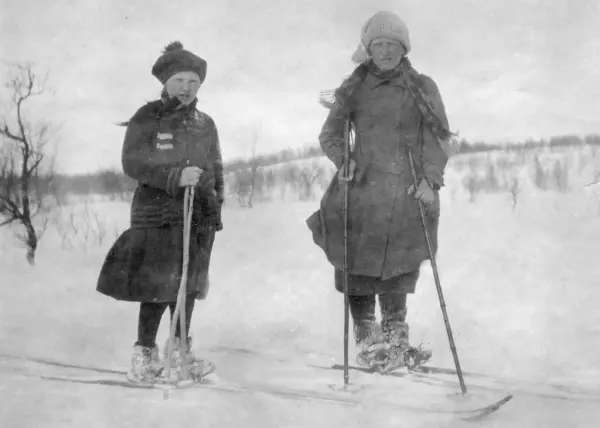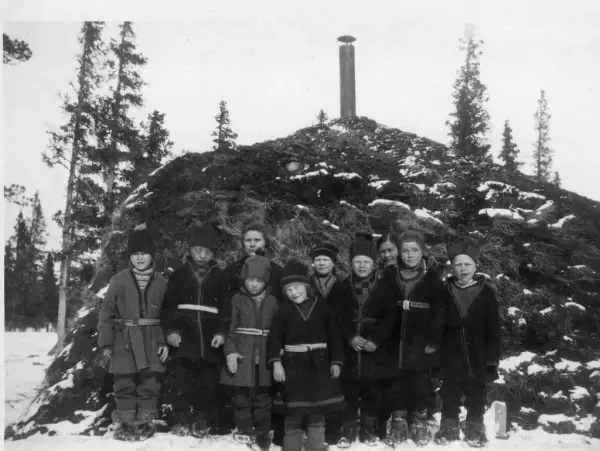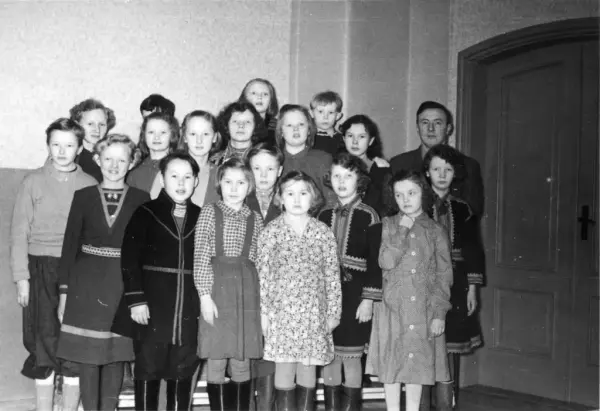SKUVLEGYHTJELASSE - The question of schooling
In the Røros region, most Sámi pupils went to the village schools and had no access to teaching in the Sámi language. Schooling and language were one of the topics at the national congress in 1917. The issue of which language the pupils should be taught in provoked great discussion. In order to assert their rights, it was important for them to have a good command of Norwegian. This choice would be at the expense of their own language.
In the 19th and early 20th centuries, many Sámi children attended the ordinary village schools. During the term, they lodged in houses in the village. There are stories of Sámi children being taught in the family homes, but this was not officially organised. One alternative for Sámi children in the Southern Sámi area was the Sámi Mission boarding school, which was established in Havika outside Namsos in 1910. Here too, all the teaching was in Norwegian, and the children were not allowed to speak Sámi amongst themselves.
Language-learning and schooling were among the main topics at the national congress in Trondheim in 1917. The question was whether Sámi children should have Norwegian as their first language or whether Sámi should be given equal status with Norwegian in the lessons. This was a dilemma for the Sámi population. The Sámi people were a minority, and the public debate was conducted in Norwegian. In order to assert their rights, it was important to have a good command of Norwegian, and many of them, including Daniel Mortenson, therefore thought that Sámi children should learn Norwegian. However, this meant neglecting the Sámi language. There was wide disagreement on the matter.
However, the national congress was able to agree on a resolution stating that the Norwegian state must take responsibility for educating Sámi children, including the Sámi language and knowledge of reindeer herding.
It was a long time before the state attended to the Sámi demands in the matter of language. A school facility was established in Hattfjelldal in 1951, and took in Sámi pupils from the whole Southern Sámi area. Schoolchildren from the southernmost areas had a long journey, and the teaching was still in Norwegian only.
Efforts to set up a Southern Sámi school continued. In 1968, a boarding school was built at Snåsa, and Sámi children were taught in Sámi for the first time. For the first few years, the children were taught in the village school, but in 1977 a separate school, the Åarjel saemiej skuvle, was ready for use.
Ella Holm Bull and Knut Bergsland defined the Southern Sámi written language, and the first textbook, Lohkede saemien, came out in 1974.
Photos (from left):
1. Eva Kristine Brækkfjell and Marta Salome Kant skiing to school in the mid-1920s.
2. From Haviken schoolhouse for Lapp children. For a long time, the Sámi Mission school at Havika near Namsos was the only school facility aimed specifically at Sámi children in the Southern Sámi area.
3. Pupils at the camp school in Vålådalen in Sweden in the 1920s.
4. Schooling far from home meant that the children could not help in the day-to-day work with the herd.
5. Schoolchildren at the Sámi school in Hattfjelldal, Nordland, in its first year of operation in 1951.



